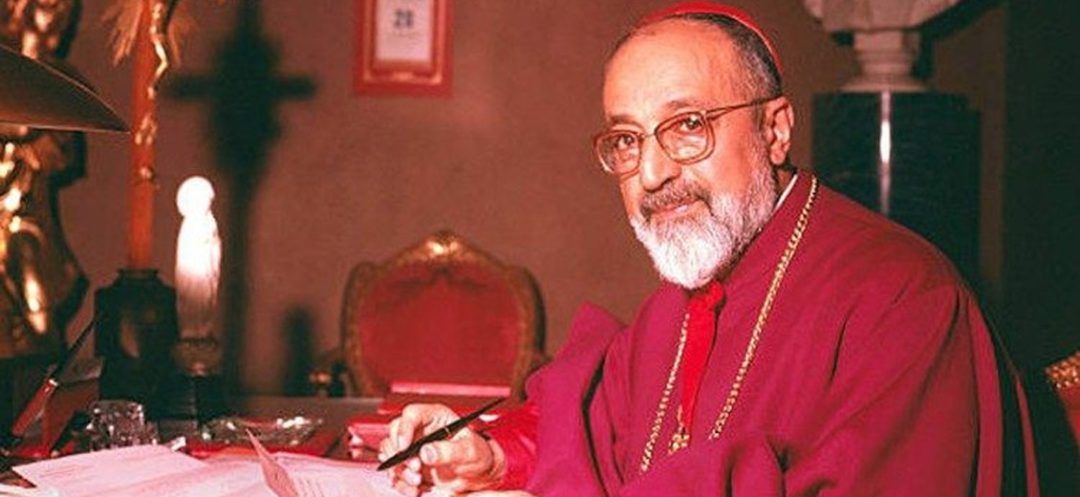
While official statements have been sparse and lacking in detail, the figure of Cardinal Grégoire Pierre XV Aghagianian (1895-1971) is emerging more clearly as the reasons for transferring his remains to Lebanon are now better understood.
This solemn transfer, taking place at Martyrs' Square, comes at his own request. Born in Georgia in 1895 and naturalized Lebanese upon Lebanon's independence in 1943, Cardinal Grégoire Pierre XV Aghagianian, who was already serving as the Patriarch of the Armenian Catholics, wished to be buried in Lebanese soil. He specifically requested interment at the Convent of Bzommar in Kesrouan, the seat of the Armenian Catholic Patriarchate that he led from 1937 to 1962 before passing it on to others who were less burdened by responsibilities, allowing him to concentrate on preparations for the Second Vatican Council.
However, for accessibility reasons, the current Armenian Catholic Patriarch, Raphael Bedros XXI, chose to keep the tomb within the Armenian Catholic Cathedral of Saints Elias and Gregory the Illuminator, located in Debbas Square, directly adjacent to Martyrs’ Square.
This decision was deeply personal for Patriarch Raphael Bedros, who, as a young seminarian in Rome, was entrusted with the care of Aghagianian's body after the cardinal’s passing. During the three days of public veneration, he noticed an unusual phenomenon: the body of the cardinal appeared to perspire, something his superiors instructed him to ignore. Holding onto this mystery for decades, he believed it to be a divine sign, and his faith was rewarded when, at his request, the coffin was reopened in 2022, revealing the body to be remarkably well-preserved.
Apart from a brief moment during today’s ceremony at Martyrs’ Square, where his body, flown in from Rome, will be transferred to its final resting place, there are no plans for a public viewing of his remains until the beatification process is completed. Currently, Cardinal Aghagianian is recognized as Venerable, a title granted in acknowledgment of his "heroic virtues," a key step in the canonization process. Indeed, everything is in place.
Preferred Inclination
The cardinal’s distinguished roles—leading the Dicastery for Evangelization (formerly Propaganda Fide, 1958-1970), serving as legate in Nationalist China, India, or in Thailand, moderating at the Second Vatican Council, being considered “papabile,” and making significant contributions in Lebanon as bishop and later as Catholicos of the Armenian Catholics, including founding schools and dispensaries—all attest to a man deeply committed to serving the Catholic Church, while also showing an unwavering dedication to championing the marginalized and the underprivileged.
However, his choice to be buried in Lebanon, despite the high-profile roles he held, underscores his deep personal commitment to the “little flock” that survived the brutal 1915 genocide and chose Lebanon as its second homeland.
Patriarch Raphael Bedros’s gesture, along with the words spoken in the presence of the Maronite Patriarch, caretaker Prime Minister Najib Mikati, and other officials, will reaffirm Lebanon’s role as a land of saints and sanctity, a beacon of Islamic-Christian harmony, and a “message of pluralism for both East and West,” as declared by Saint John Paul II. This truth will be vividly demonstrated during Thursday’s ceremony, as the casket of the Servant of God is carried from Martyrs' Square—a symbolic gathering place for all Lebanese people—to Saint Gregory the Illuminator Cathedral, borne by both Christian and Muslim hands.
From this place and from a higher realm, Cardinal Aghagianian will continue to assist those who seek his intercession, akin to Therese of Lisieux, who vowed to “spend her heaven doing good on earth.” He made this promise to those who visited him in his final days, after he had lost his sight. “I can do nothing for you now,” he said, “but if God wills, I will be able to, after death.” His final words reflected this spirit; as he neared the end and saw a glass of water being brought to him, he exclaimed, “I thirst,” mirroring his Master on the cross, and added, “I thirst for your salvation.”
Read more




Comments